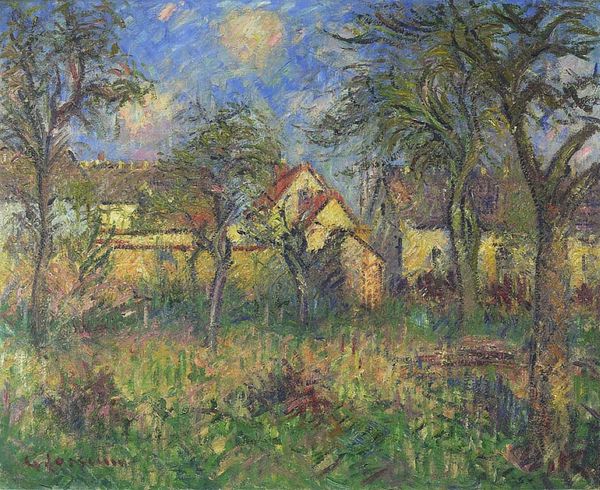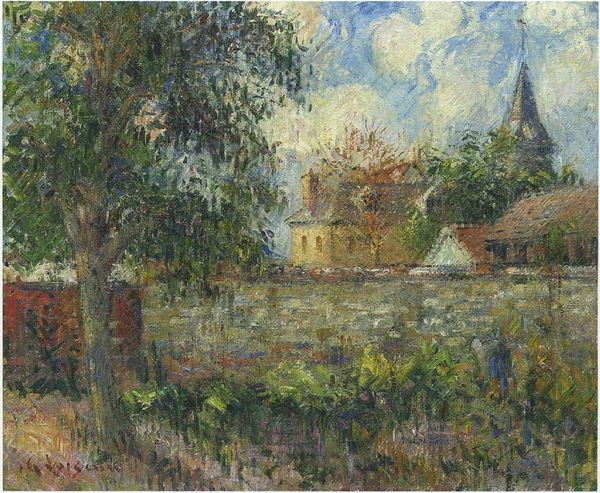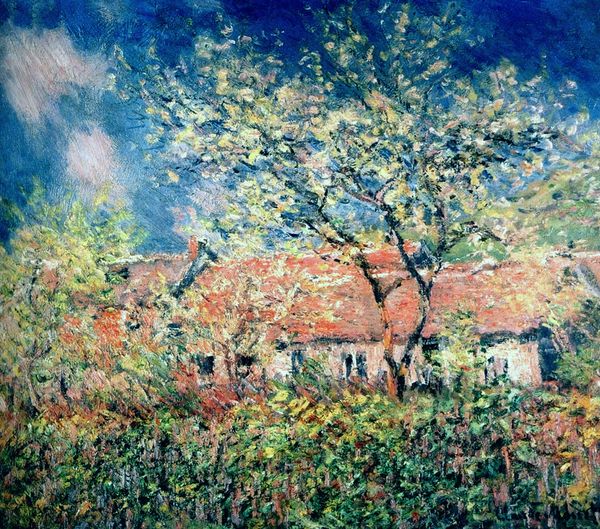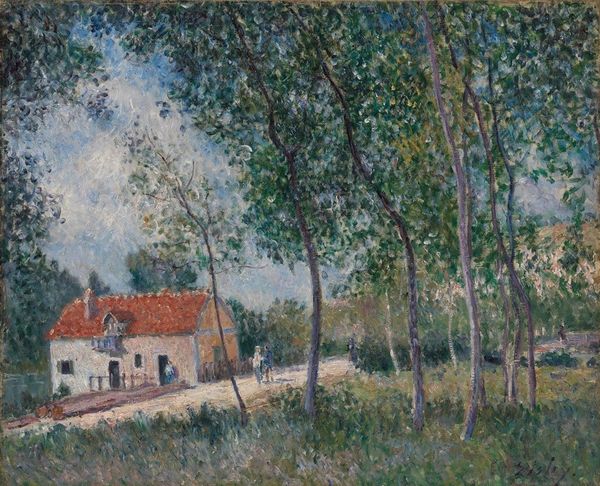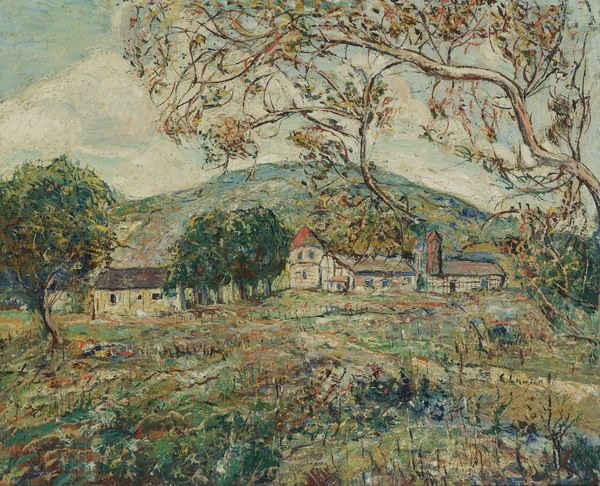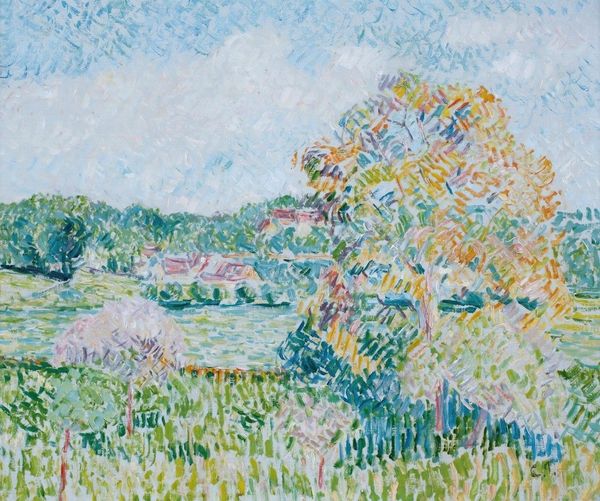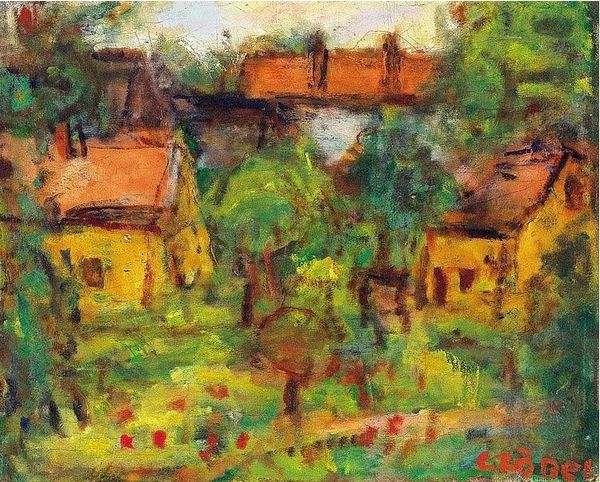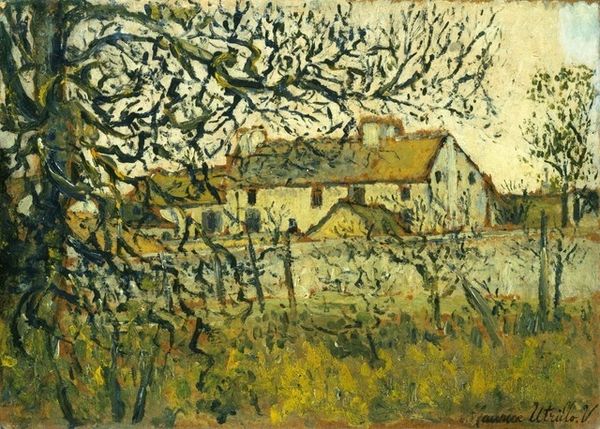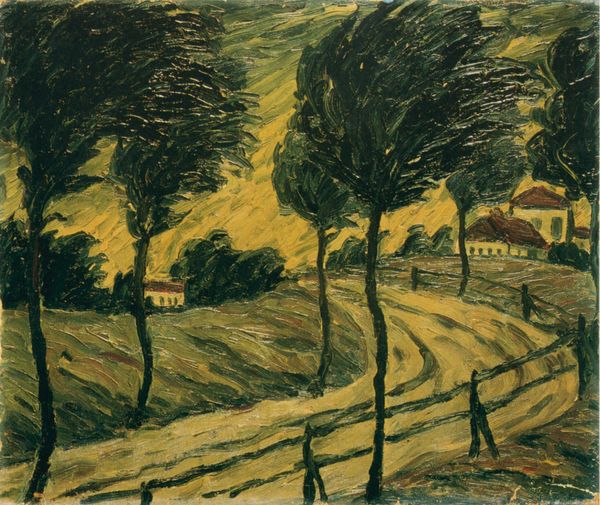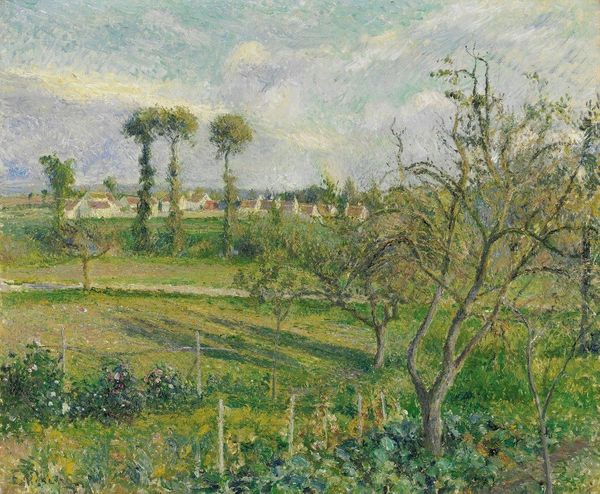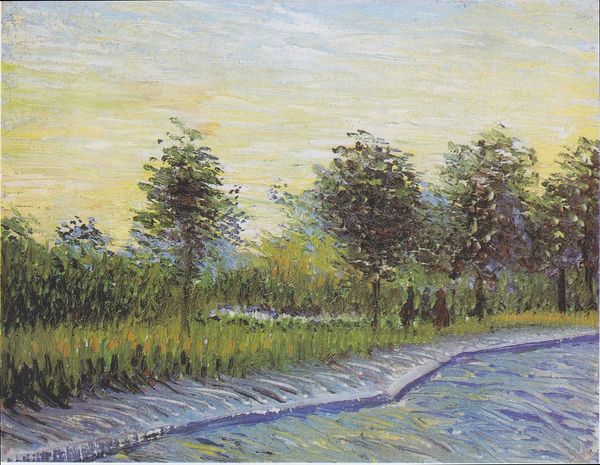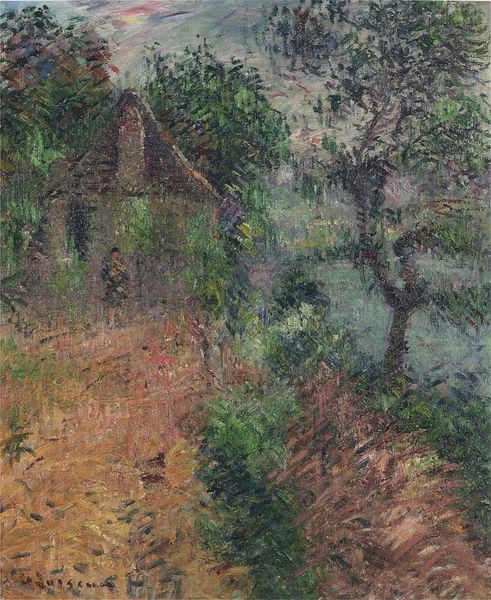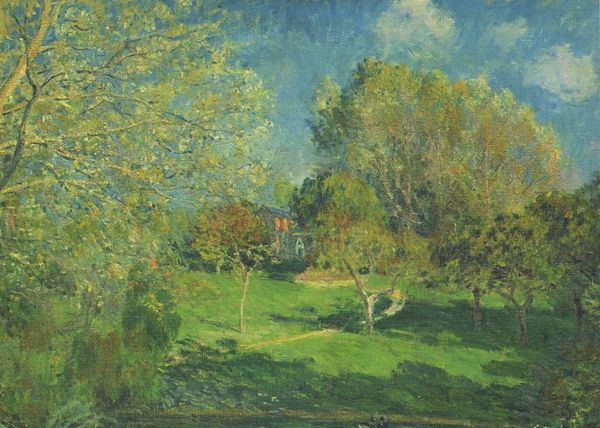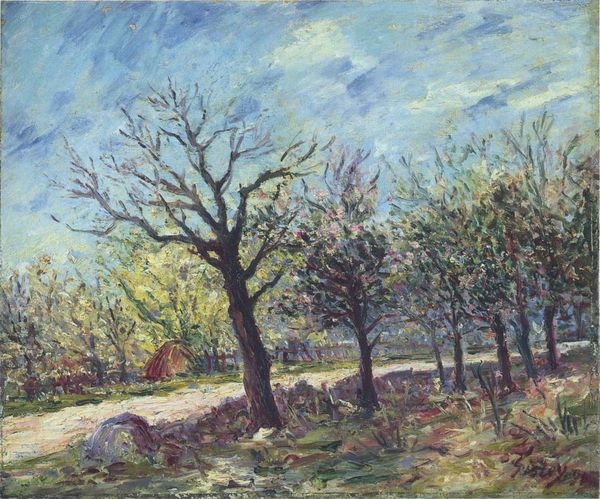
painting, plein-air, oil-paint, impasto
#
garden
#
abstract expressionism
#
painting
#
impressionism
#
impressionist painting style
#
plein-air
#
oil-paint
#
landscape
#
house
#
impressionist landscape
#
oil painting
#
impasto
Copyright: David Burliuk,Fair Use
Curator: This painting, thought to be titled "Summer Gardens Near the House" by David Burliuk, presents a scene dominated by verdant growth surrounding a humble dwelling. The application of oil-paint and impasto brings out a unique sensory texture. Editor: Immediately, I'm struck by how tangible everything appears. You can almost feel the weight of the oil paint and sense the rich, sun-drenched earth. The materiality speaks volumes about the labor involved in both creating the artwork and cultivating the depicted garden. Curator: Indeed. Burliuk’s thick, almost sculptural application of paint gives each element—the flowers, the foliage, the very walls of the house—a distinct presence. Note the interplay of light and shadow; Burliuk emphasizes shape, not color. This technique offers insight into the abstract, underlying structure that permeates even this impressionistic work. Editor: Considering the period when this painting might have been created, how does the visible labor reflected in the impasto align with prevailing ideas about agriculture or craft? The very tactile nature of the work brings me closer to understanding the manual efforts embodied in that garden. How much more of a romantic approach to landscape is being shown? Curator: It prompts us to consider his engagement with, and perhaps critique of, more established artistic traditions. By emphasizing the process through visible strokes and layers, Burliuk subverts the idealized, smoothly finished landscape paintings so esteemed at the time. We could look at this as him elevating manual labour, using impasto to evoke an organic landscape. Editor: Right. He wasn't just representing the finished product of the garden; instead, he showcased the materials of creation. It's almost like honoring not just the bounty, but also the process of how it was brought to existence. It feels less a polished composition, and more like a window onto labour and transformation. Curator: And ultimately a lens that gives us fresh meaning and context with how we see not only art, but its significance within historical materialism. Editor: Absolutely; it is this intertwining of social history and craft that grants such paintings true richness. Thanks for sharing these insights.
Comments
No comments
Be the first to comment and join the conversation on the ultimate creative platform.
